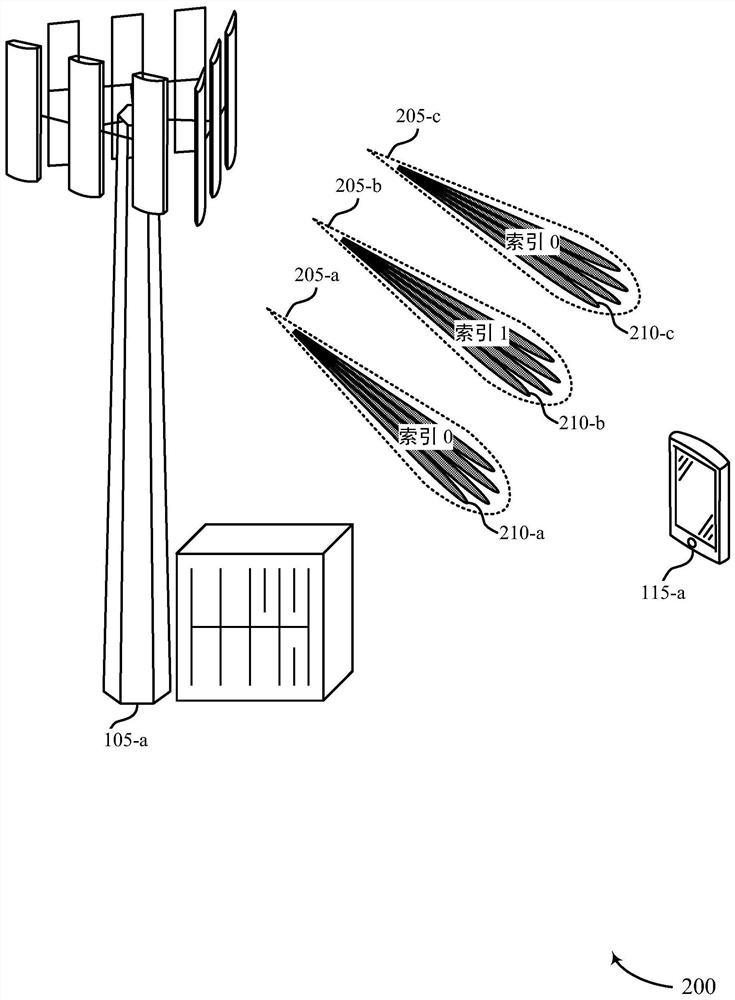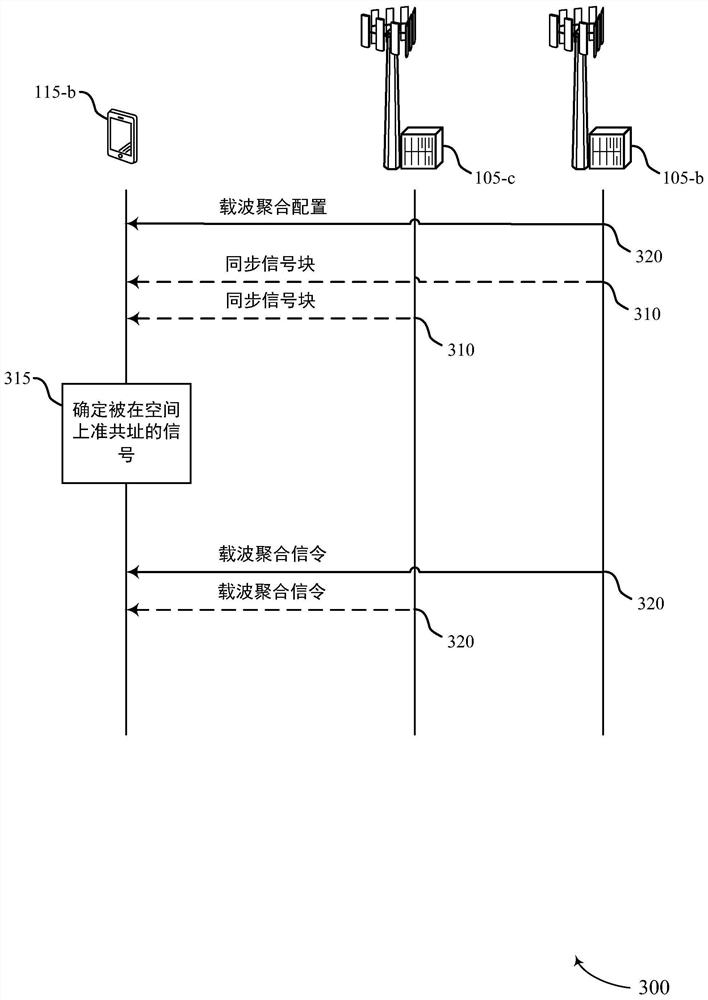Spatial quasi co-location conflict handling
A quasi-co-location and space technology, applied in the direction of synchronization device, separation device of transmission path, wireless communication, etc.
- Summary
- Abstract
- Description
- Claims
- Application Information
AI Technical Summary
Problems solved by technology
Method used
Image
Examples
Embodiment Construction
[0043] In some wireless communication systems, a base station may communicate with user equipment (UE) using multiple antennas. Additionally, a base station may include multiple cells and communicate with UEs according to a carrier aggregation (CA) configuration using multiple antennas to communicate over the multiple cells. In some cases, a CA configuration may include communications on multiple cells from multiple antennas on one or more separate base stations. Based on the use of multiple antennas, there may be a quasi-co-location (QCL) relationship between one or more antenna ports corresponding to the multiple antennas. A QCL relationship may indicate that a spatial parameter of a transmission on one antenna port may be inferred from a spatial parameter of another transmission on a different antenna port.
[0044] However, for an in-band CA configuration, a UE may not simultaneously support multiple spatial QCL relationships within a cell or across cells. For example, s...
PUM
 Login to View More
Login to View More Abstract
Description
Claims
Application Information
 Login to View More
Login to View More - R&D
- Intellectual Property
- Life Sciences
- Materials
- Tech Scout
- Unparalleled Data Quality
- Higher Quality Content
- 60% Fewer Hallucinations
Browse by: Latest US Patents, China's latest patents, Technical Efficacy Thesaurus, Application Domain, Technology Topic, Popular Technical Reports.
© 2025 PatSnap. All rights reserved.Legal|Privacy policy|Modern Slavery Act Transparency Statement|Sitemap|About US| Contact US: help@patsnap.com



